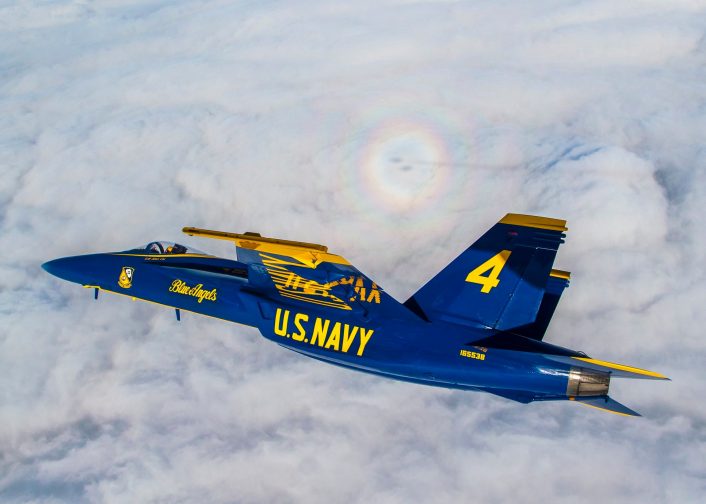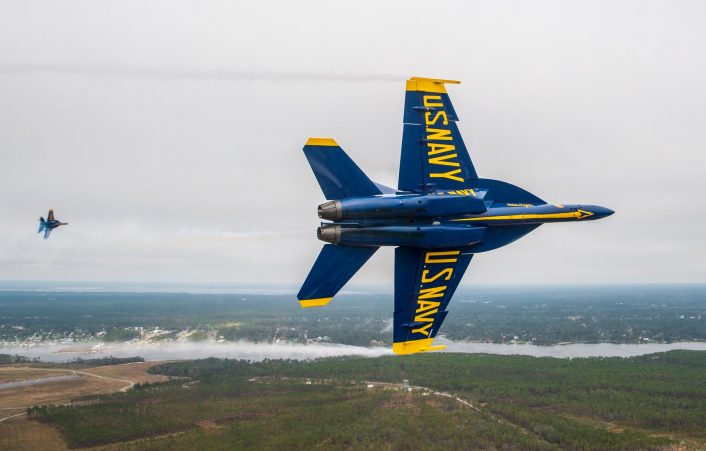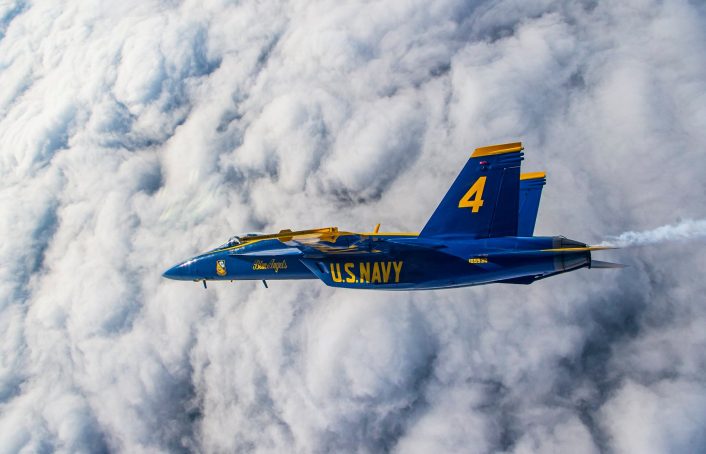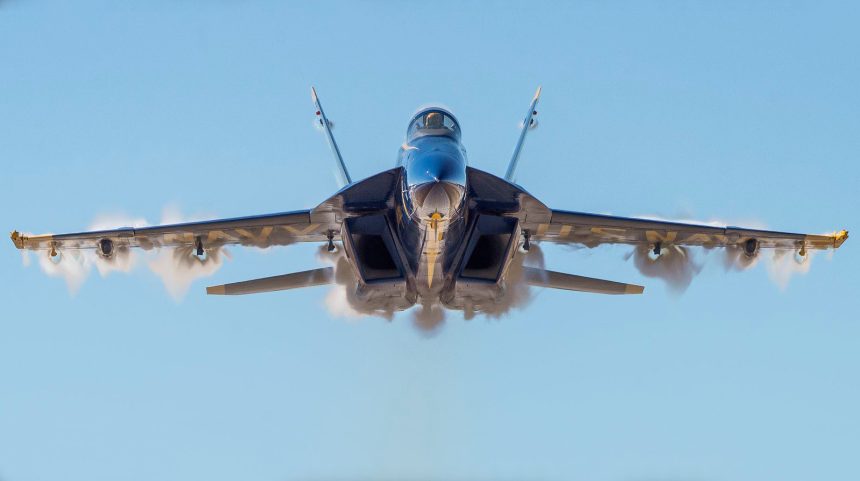The Blue Angels have started preparing the 2021 flight demonstration season with the F/A-18E/F Super Hornet.
As we already reported, the Blue Angels, the U.S. Navy Flight Demonstration Team, flew their final formation flight with the “Legacy” F/A-18C/D Hornet on Nov. 4, 2020. After flying the F/A-18C single-seat and F/A-18D two-seat Hornet from 2010 (previously, from 1986 to 2010 the Blues flew the F/A-18-A/B jets) the team is in fact transitioning to the new Boeing F/A-18E/F Super Hornet for the 2021 flight demonstration season.
The team’s first scheduled demonstration in the new, larger Super Hornets is on April 10-11, 2021 in Jacksonville, Florida at the Naval Air Station JAX Air Show, and training for the first airshow with the new jet is underway at NAS Pensacola, home of the Blues.
For the first time this week, four Super Hornet pilots flying in the #1 to #4 positions have flown practice maneuvers performed by the team’s signature “Diamond” formation. The solos, #5 and #6, have also trained with the new aircraft, conducting opposing maneuvers.

The team published on social media some stunning images of the team’s Super Hornets during these training sorties.

Here’s what we wrote about the new F/A-18E/F in a previous article we published here at The Aviationist:
The new Boeing F/A-18E single-seat and two-seat F/A-18F Super Hornets are larger, more capable aircraft than the “legacy” Hornet. As we previously reported on TheAviationist.com, the Blue Angels say, “The Super Hornet is 25% larger, can fly 40% further, remain on station 80% longer and carry more weapons than its predecessors. The Super Hornet F/A-18 E/F models have deployed with battle groups since 2001.”
The bigger F/A-18 E/F Super Hornets have a wingspan that is 4′ 3.6″ wider than the previous Hornet. That is over four-feet more wingspan. This greater wingspan will be visually apparent in Blue Angel demos.
The Super Hornet is also 4′ 3″ longer than the legacy Hornet and sits nearly one-foot higher at the top of its twin tails. These larger dimensions may make the new Blue Angel Super Hornets even easier to see and photograph at flight demos.
When we spoke to former Blue Angel’s commander, then-Capt. Eric Doyle, Blue Angel #1, about the transition to the new Super Hornet. Capt. Doyle told TheAviationist.com that, “Our goal is to make it seamless. You’ll see blue jets appear in another year that are Super Hornets, that are going to look a lot like this one. They’re F-18s, so they’re built by Boeing, and the demo will look very similar.”
One difference that may also be apparent to airshow fans with the new, larger, Super Hornets is more thrust. Pilots who have flown both the Hornet and Super Hornet tell TheAviationist.com that sustaining turn-rates and generating acceleration at low altitudes is going to be much easier in the larger, more powerful Super Hornet. This could make the Blue’s demos even more thrilling and dynamic than their previous routines.

While the team prepares for the airshow season with the Super Hornet, the retired F/A-18C/D aircraft have already started joining museum collections: on Nov. 18, 2020, an F/A-18C piloted by Cmdr. Frank Weisser, landed at Washington Dulles Airport and taxied to the Steven F. Udvar-Hazy Center in Chantilly, VA, where it is going to be put on display after preparation work. It’s the first “Blue Angels” aircraft and the first F-18 the museum has acquired.








